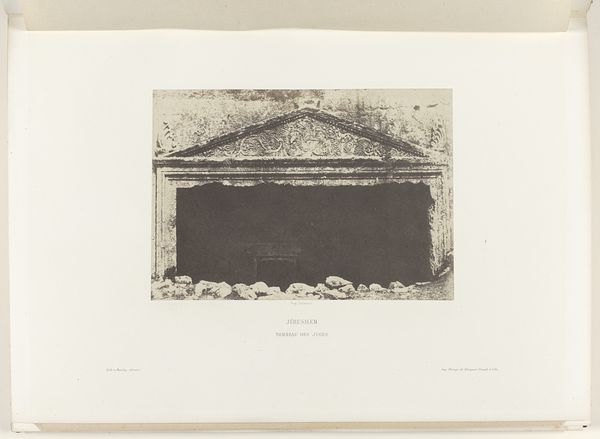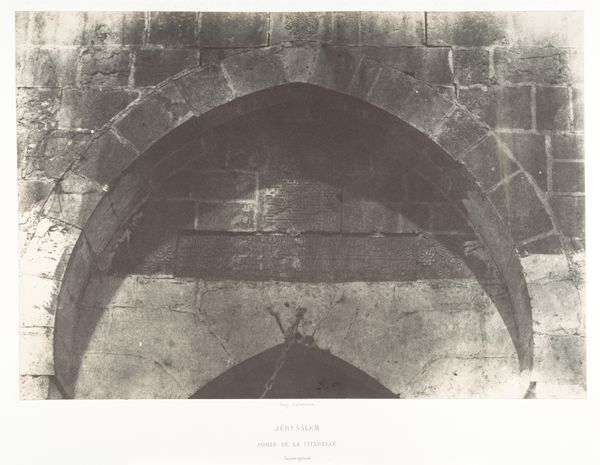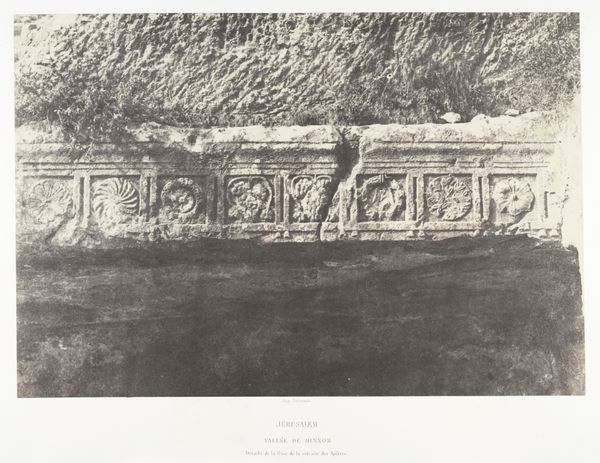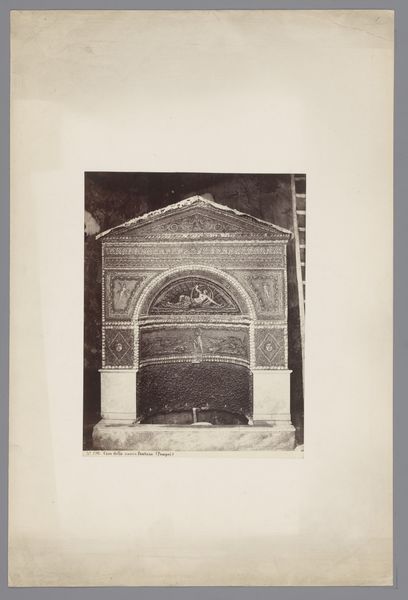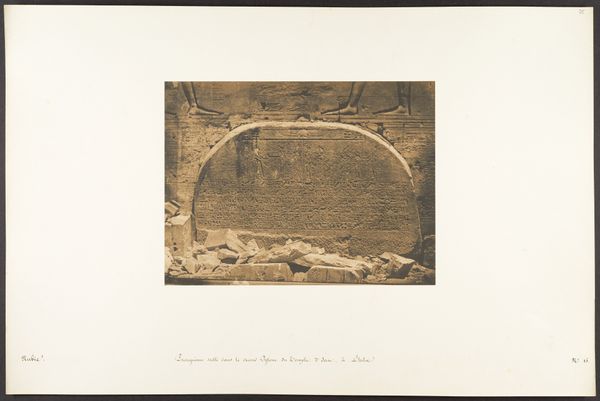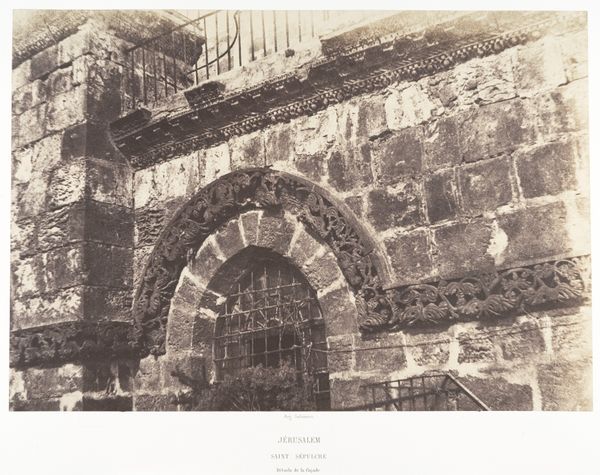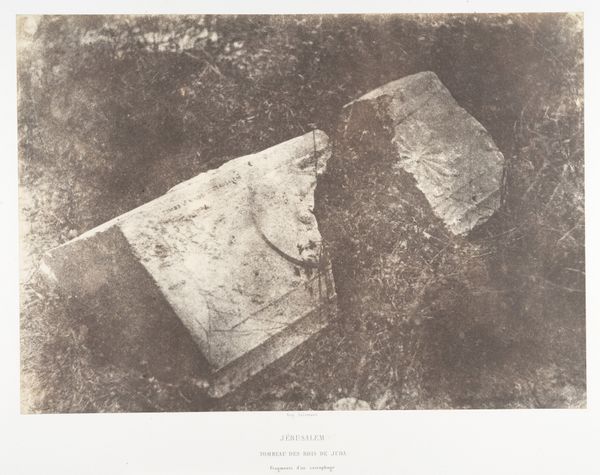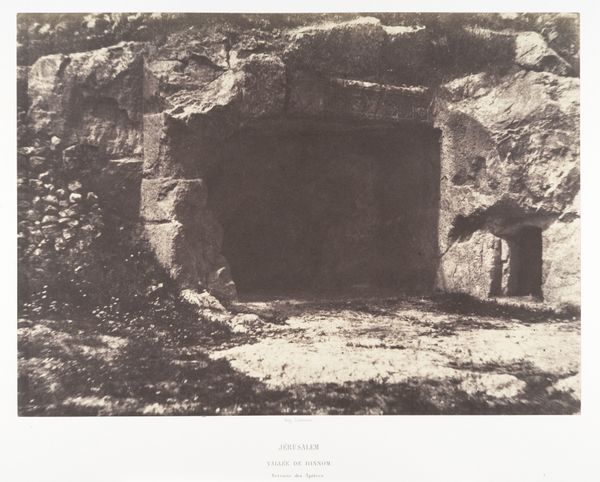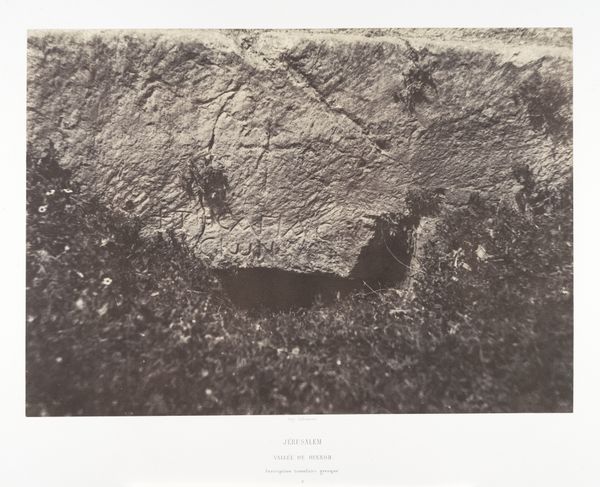
#
natural shape and form
#
natural formation
#
natural tone
#
snowscape
#
organic shape
#
carved into stone
#
nature heavy
#
murky
#
watercolor
#
shadow overcast
Dimensions: Image: 23.2 x 32.5 cm (9 1/8 x 12 13/16 in.) Mount: 44.8 x 60.1 cm (17 5/8 x 23 11/16 in.)
Copyright: Public Domain
Curator: Auguste Salzmann’s "Jérusalem, Tombeau des Juges, Détails," created between 1854 and 1859, is a striking photograph now residing here at the Met. Editor: Immediately, I’m struck by the overwhelming darkness. The vast, undefined space dominates the composition, creating a sense of mystery and the unknown. Curator: Precisely. Note the formal arrangement – the rigid geometry of the tomb’s entrance juxtaposed with the textured stonework above. Salzmann expertly uses light and shadow to define these architectural elements, creating a palpable tension between the constructed and the natural. The linear form seems immutable. Editor: The triangular pediment is visually quite active with ornamentation, contrasted against that void. I think culturally, this photograph triggers powerful associations. Tombs signify endings, but also continuations. What stories and beliefs are embedded within these stones, and how do they resonate even today? Curator: Good question. Observe how Salzmann employs the photographic process to capture detail and texture. The way the light interacts with the stone surfaces reveals a concern with materiality, which is fundamental. Semiotically, the composition represents a duality; surface and depth, light and shadow. Editor: Right, it’s not just the *idea* of a tomb. The details hint at deeper meaning. The carved ornaments almost seem organic, like vines or leaves; possibly referencing nature’s ability to reclaim and transform, thereby changing the original meaning. There’s something undeniably haunting and strangely beautiful about its weathered appearance. The symbols transcend mere aesthetics. Curator: I agree. Salzmann’s precise framing directs our eye, pushing us to consider not just the *what*, but *how* meaning is conveyed through visual structure. He wants us to consider the ontology of representation itself. Editor: I find it fascinating how this photograph becomes a vessel for our collective anxieties about mortality. It prompts me to consider the stories we create around death, and how we attempt to memorialize and find meaning in the face of inevitable loss. It touches on enduring human questions about our existence. Curator: Ultimately, "Jérusalem, Tombeau des Juges, Détails" demonstrates that the strength lies in formal organization and nuanced application of technique. The content gains complexity from the interaction of tone and texture. Editor: Yes, it's amazing to see how a simple image can resonate with deep symbolism. This photograph feels simultaneously ancient and intensely relevant, stirring complex thoughts.
Comments
No comments
Be the first to comment and join the conversation on the ultimate creative platform.
